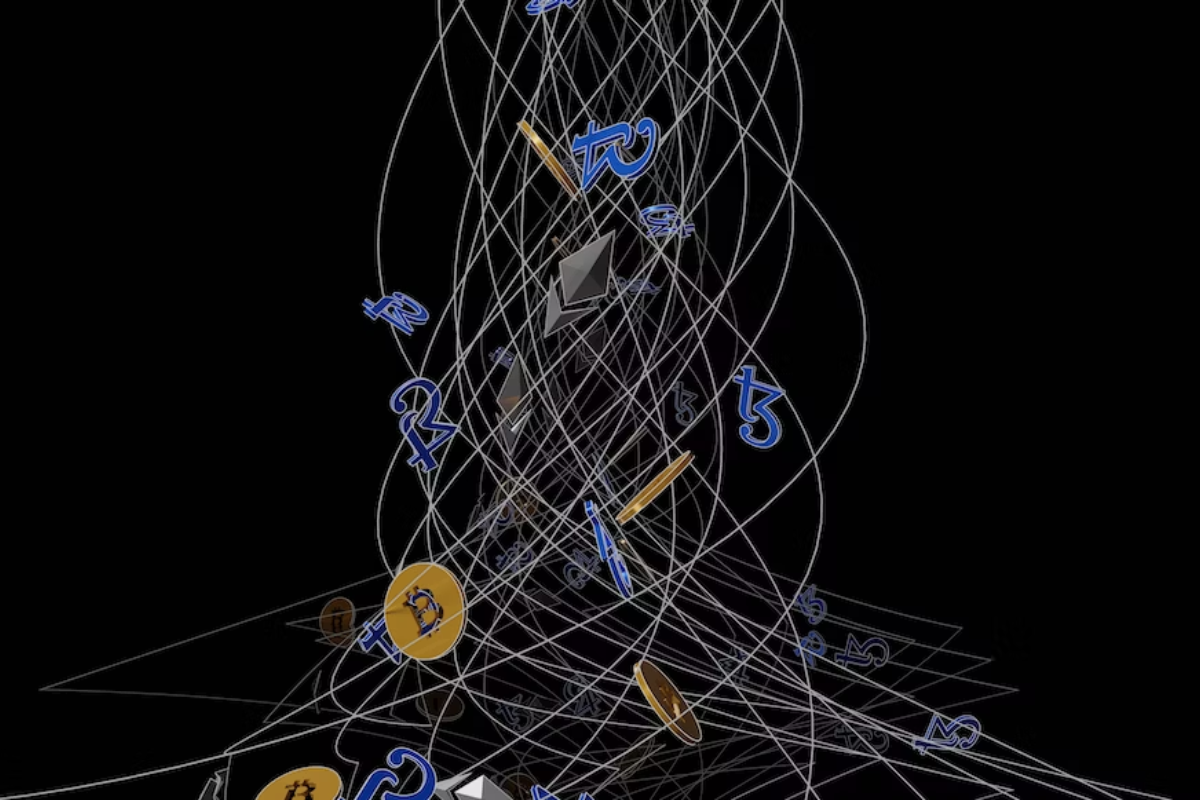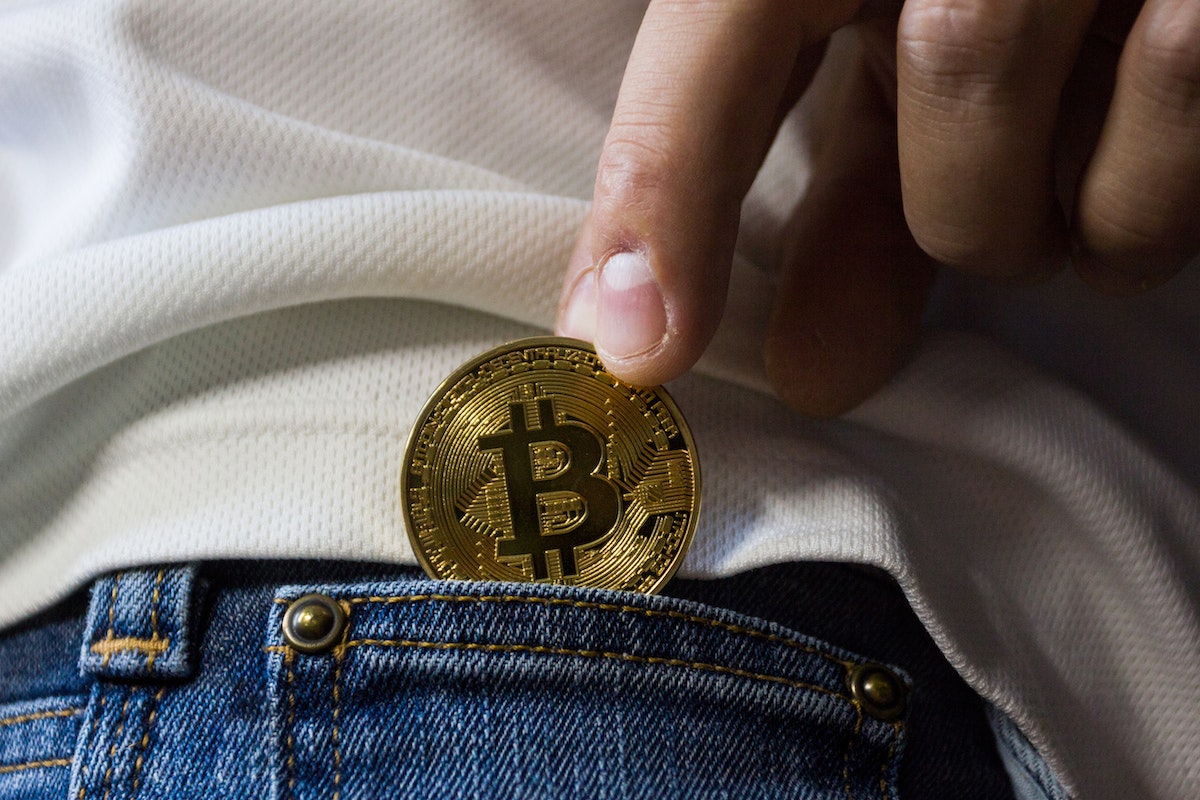Are you interested in how to add BTC to MetaMask?
MetaMask is a popular browser extension wallet that allows users to access Ethereum and Ethereum-compatible blockchains.
Adding Bitcoin to your MetaMask wallet can expand your asset options and allow you to easily send and receive BTC.
In this article, we will guide you through the process of adding Bitcoin to your MetaMask wallet using two different methods.
The first method involves adding Binance-PEG Bitcoin (BTCB) to your MetaMask wallet.
BTCB is a wrapped version of Bitcoin on the Binance Smart Chain (BSC) that allows users to interact with the BSC ecosystem.
The second method involves adding the Bitcoin network to your MetaMask wallet using a custom RPC (Remote Procedure Call) configuration.
This will allow you to send and receive BTC on the Bitcoin network directly from your MetaMask wallet.
Whether you prefer to use BTCB or the Bitcoin network, we have got you covered.
Post Contents
Understanding Metamask and BTC

If you are new to the world of cryptocurrencies, you may be wondering what Metamask and BTC are.
Metamask is a browser extension that allows you to interact with the Ethereum network and other Ethereum-based blockchains.
It is a popular wallet for storing and managing Ethereum and ERC-20 tokens.
BTC, on the other hand, is a cryptocurrency that is not based on the Ethereum network, but rather on its own blockchain.
To add BTC to your Metamask wallet, you need to use a bridge service or import a token.
A bridge service is a third-party platform that allows you to convert BTC into an Ethereum-based token, such as Wrapped BTC (WBTC), which can then be added to your Metamask wallet.
Importing a token, on the other hand, involves adding the token contract address to your Metamask wallet.
It is important to note that while Metamask is primarily an Ethereum wallet, it can also support other cryptocurrencies through the use of bridge services and token imports.
However, it is always important to do your research and ensure that any third-party services you use are reputable and secure.
Overall, Metamask and BTC are two important entities in the world of cryptocurrencies.
By understanding how they work and how they can be used together, you can take advantage of the benefits that both have to offer.
Setting Up Metamask Wallet
If you’re new to the world of cryptocurrency, setting up a Metamask wallet is an essential first step.
Metamask is a browser extension that acts as a wallet for Ethereum and other ERC-20 tokens.
It is easy to use and secure, making it a popular choice for many crypto enthusiasts.
To set up your Metamask wallet, follow these simple steps:
- Install Metamask: Go to the Metamask website and download the extension for your preferred browser. Once installed, create a new wallet by following the prompts.
- Create a password: Choose a strong password to protect your wallet. Write it down and keep it in a safe place.
- Backup your seed phrase: Metamask will provide you with a 12-word seed phrase. This phrase is crucial for recovering your wallet if you lose your password or your device. Write down the seed phrase and keep it in a secure location.
- Connect to the Ethereum Mainnet: By default, Metamask is set to the Ethereum Mainnet. You can confirm this by checking the network indicator in the top right corner of the extension. If you need to switch to a different network, click on the network indicator and choose the network you want to use.
- Add funds to your wallet: To add funds to your Metamask wallet, click on the “Deposit” button and follow the prompts. You can deposit Ethereum or any other ERC-20 token that is supported by Metamask.
That’s it! You now have a secure and easy-to-use wallet that you can use to store, send, and receive Ethereum and other ERC-20 tokens.
Adding Custom Network

If you want to add a custom network to your MetaMask wallet, you can do it manually using a few methods.
Here are the steps to add some of the popular custom networks:
Binance Smart Chain
- Open your MetaMask wallet and click on the network selector in the top left corner.
- Click on the “Custom RPC” option at the bottom of the list.
- Enter the following details in the form:
- Network Name: Binance Smart Chain
- RPC URL: https://bsc-dataseed1.binance.org/
- Chain ID: 56
- Symbol: BNB
- Block Explorer URL: https://bscscan.com/
- Click on the “Save” button to add the network to your wallet.
Avalanche
- Open your MetaMask wallet and click on the network selector in the top left corner.
- Click on the “Custom RPC” option at the bottom of the list.
- Enter the following details in the form:
- Network Name: Avalanche
- RPC URL: https://api.avax.network/ext/bc/C/rpc
- Chain ID: 43114
- Symbol: AVAX
- Block Explorer URL: https://cchain.explorer.avax.network/
- Click on the “Save” button to add the network to your wallet.
Harmony
- Open your MetaMask wallet and click on the network selector in the top left corner.
- Click on the “Custom RPC” option at the bottom of the list.
- Enter the following details in the form:
- Network Name: Harmony
- RPC URL: https://api.harmony.one
- Chain ID: 1666600000
- Symbol: ONE
- Block Explorer URL: https://explorer.harmony.one/
- Click on the “Save” button to add the network to your wallet.
Polygon
- Open your MetaMask wallet and click on the network selector in the top left corner.
- Click on the “Custom RPC” option at the bottom of the list.
- Enter the following details in the form:
- Network Name: Polygon
- RPC URL: https://rpc-mainnet.maticvigil.com/
- Chain ID: 137
- Symbol: MATIC
- Block Explorer URL: https://explorer-mainnet.maticvigil.com/
- Click on the “Save” button to add the network to your wallet.
Remember to always verify the custom network information before adding it to your wallet.
Adding a custom network can be risky, and you should only do it if you trust the source of the information.
How to Add BTC to MetaMask

Adding BTC to your MetaMask wallet is a simple process that can be done in just a few steps.
Here’s how to do it:
Adding Wrapped Bitcoin
- Open your MetaMask wallet and click on the “Add Token” button.
- Select “Custom Token” and enter the following information:
- Token Symbol: WBTC
- Token Contract Address: 0x2260fac5e5542a773aa44fbcfedf7c193bc2c599
- Decimals of Precision: 8
- Click on “Next” and then “Add Tokens” to confirm.
Adding ERC-20 Tokens
- Copy the contract address for the ERC-20 token you want to add to your MetaMask wallet.
- Open your MetaMask wallet and click on the “Add Token” button.
- Select “Custom Token” and enter the following information:
- Token Symbol: [enter the token symbol here]
- Token Contract Address: [paste the token contract address here]
- Decimals of Precision: [enter the number of decimal places for the token]
- Click on “Next” and then “Add Tokens” to confirm.
That’s it! Your BTC or ERC-20 token should now be added to your MetaMask wallet.
Keep in mind that not all tokens are supported by MetaMask, so make sure to check if the token you want to add is supported before attempting to add it.
It’s important to note that when adding ERC-20 tokens to MetaMask, you may need to manually import the tokens.
To do this, click on the “Import Tokens” button and enter the token symbol and contract address.
Overall, adding BTC and ERC-20 tokens to your MetaMask wallet is a straightforward process that can be completed in just a few steps.
Understanding EVM Compatibility
If you’re new to the world of blockchain, you might have come across the term EVM or EVM-compatible networks.
EVM stands for Ethereum Virtual Machine, which is essentially a virtual machine that executes smart contracts on the Ethereum blockchain.
EVM-compatible networks are blockchain networks that are built to be compatible with the Ethereum Virtual Machine.
This means that they can execute the same smart contracts as the Ethereum blockchain.
Some of the popular EVM-compatible networks include Binance Smart Chain, Polygon, and Avalanche.
One of the benefits of EVM compatibility is that it allows developers to easily port their smart contracts from Ethereum to other EVM-compatible networks.
This means that they can take advantage of the features and benefits of other networks without having to rewrite their smart contracts from scratch.
However, it’s important to note that not all blockchains are EVM-compatible.
For example, Bitcoin and Ethereum are not interoperable, and you cannot seamlessly bridge your Bitcoin onto Ethereum.
To add an EVM-compatible network to your MetaMask wallet, you need to add the network’s RPC URL to MetaMask.
RPC stands for remote procedure call, which is a set of protocols that allow a client (such as MetaMask) to interact with a blockchain.
Overall, understanding EVM compatibility is important if you want to take advantage of the benefits of EVM-compatible networks.
By adding these networks to your MetaMask wallet, you can access a wide range of decentralized applications and take advantage of the features and benefits of different blockchain networks.
Interacting with Dapps
If you’re new to the world of decentralized finance (DeFi) and decentralized applications (Dapps), it may seem overwhelming at first.
But don’t worry, it’s not as complicated as it might seem.
In fact, interacting with Dapps is similar to interacting with traditional websites.
One of the most popular Dapps is Uniswap, a decentralized exchange (DEX) that allows you to trade cryptocurrencies without the need for a centralized intermediary.
To use Uniswap, you’ll need to connect your MetaMask wallet to the Dapp.
To do this, simply navigate to the Uniswap website and click on the MetaMask Extension icon in your browser toolbar.
From there, you can connect to the Dapp and start trading.
But Uniswap is just one example of a Dapp.
There are many other Dapps that allow you to do everything from yield farming to interacting with smart contracts.
To interact with a smart contract, your Dapp will need the contract’s network, address, ABI, bytecode, and source code.
If you’re not connected to the right network, you won’t be able to send transactions to your contract.
Overall, interacting with Dapps is easy once you get the hang of it.
Just remember to always connect your MetaMask wallet to the Dapp before you start using it.
Managing Transactions
Once you have added BTC to your MetaMask wallet, you can start managing your transactions.
Here are a few tips to help you get started:
Viewing Transactions
To view your transaction history, click on the MetaMask icon in your browser and select the wallet you want to view.
From there, you can see all the transactions that have been made with that wallet.
You can also view the details of each transaction, including the amount sent, the recipient, and the transaction fee.
Fees
Transaction fees are an important aspect of managing your transactions.
When you send BTC, you’ll need to pay a transaction fee to the network.
This fee is paid to the miners who process your transaction.
The higher the fee, the faster your transaction will be processed.
You can adjust the fee by clicking on the “Edit” button next to the fee amount.
Withdrawing BTC
To withdraw BTC from your MetaMask wallet, you’ll need to send it to a BTC address.
To do this, click on the “Send” button in your wallet and enter the recipient’s BTC address.
You can also enter the amount you want to send and the transaction fee.
Transaction Speed
Transaction speed is important when managing your transactions.
If you want your transaction to be processed quickly, you’ll need to pay a higher fee.
However, if you’re not in a hurry, you can choose a lower fee and wait for the transaction to be processed.
Transaction Limits
MetaMask has some limits on the amount of BTC that can be sent in a single transaction.
If you’re sending a large amount of BTC, you may need to split it into multiple transactions.
Managing transactions in MetaMask is easy and intuitive.
By following these tips, you can ensure that your transactions are processed quickly and securely.
Security Measures
When it comes to using non-custodial wallets like MetaMask, security should be your top priority.
Here are some security measures you can take to ensure your BTC holdings are safe:
Use a Non-Custodial Wallet
MetaMask is a non-custodial wallet, which means you have full control over your private keys.
This is important because it means you are the only one who can access your BTC.
By contrast, custodial wallets hold your private keys for you, which means you are trusting a third party with your funds.
Keep Your Private Key Safe
Your private key is the most important piece of information when it comes to accessing your BTC.
If someone else gets hold of your private key, they can steal your BTC.
Make sure you keep your private key safe and never share it with anyone.
You can write it down on a piece of paper and store it in a secure location, or use a hardware wallet.
Enable Two-Factor Authentication
Two-factor authentication (2FA) adds an extra layer of security to your MetaMask wallet.
When you enable 2FA, you will need to enter a code from your phone or another device in addition to your password to access your wallet.
This makes it much harder for someone else to access your funds even if they have your password.
Be Careful with Phishing Scams
Phishing scams are a common way for hackers to steal private keys.
They usually involve sending you an email or message that looks like it came from MetaMask or another trusted source.
The message will ask you to enter your private key or other sensitive information.
Always be careful when clicking links or entering information online, and make sure you are on the official MetaMask website before entering any information.
Check Your Wallet Regularly
Finally, make sure you check your MetaMask wallet regularly to ensure that your BTC is still there.
If you notice any unauthorized transactions, contact MetaMask support immediately.
Key Takeaways
Adding Bitcoin to your MetaMask wallet can be a bit challenging since the wallet only supports Ethereum Virtual Machine (EVM) tokens.
However, with the right steps, you can import EVM-compatible BTC tokens to your MetaMask wallet.
Here are some key takeaways to keep in mind:
- To add Bitcoin to your MetaMask wallet, you need to first get an EVM-compatible BTC token. This can be done by using a bridge that allows you to swap BTC to an EVM-compatible token.
- Once you have the EVM-compatible BTC token, you can import it to your MetaMask wallet by following these steps:
- Click on the MetaMask extension icon on your browser.
- Click on the three dots and select “Add Token.”
- Paste the token’s contract address and click “Next.”
- Confirm the token details and click “Add Tokens.”
- You can also add different blockchain networks to your MetaMask wallet by following these steps:
- Click on the MetaMask extension icon on your browser.
- Click on the three dots and select “Settings.”
- Select “Networks” and click “Add Network.”
- Enter the network details and click “Save.”
- Storing Bitcoin on MetaMask is a great way to keep your BTC secure and easily accessible. MetaMask allows you to interact with the Ethereum network and its various decentralized applications, making it a versatile wallet for cryptocurrency users.
By following these simple steps, you can add Bitcoin to your MetaMask wallet and take advantage of its many features.
Remember to always keep your private keys secure and never share them with anyone.






























